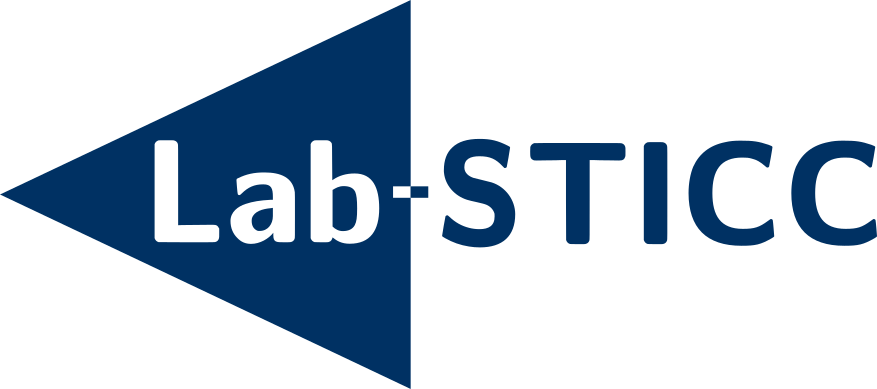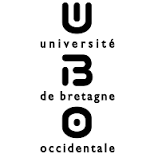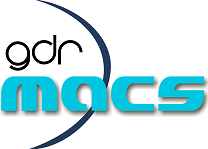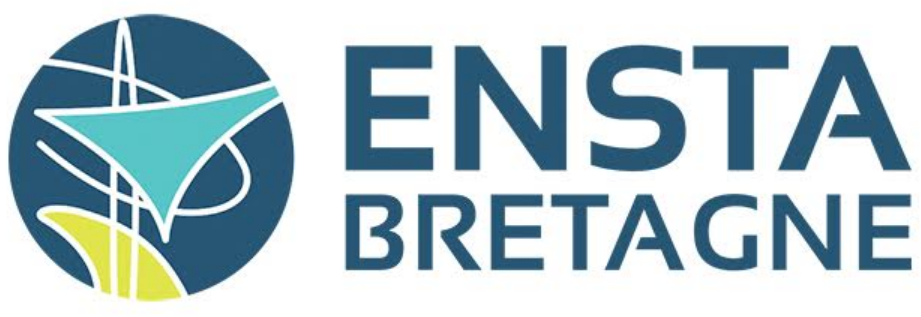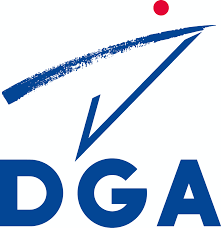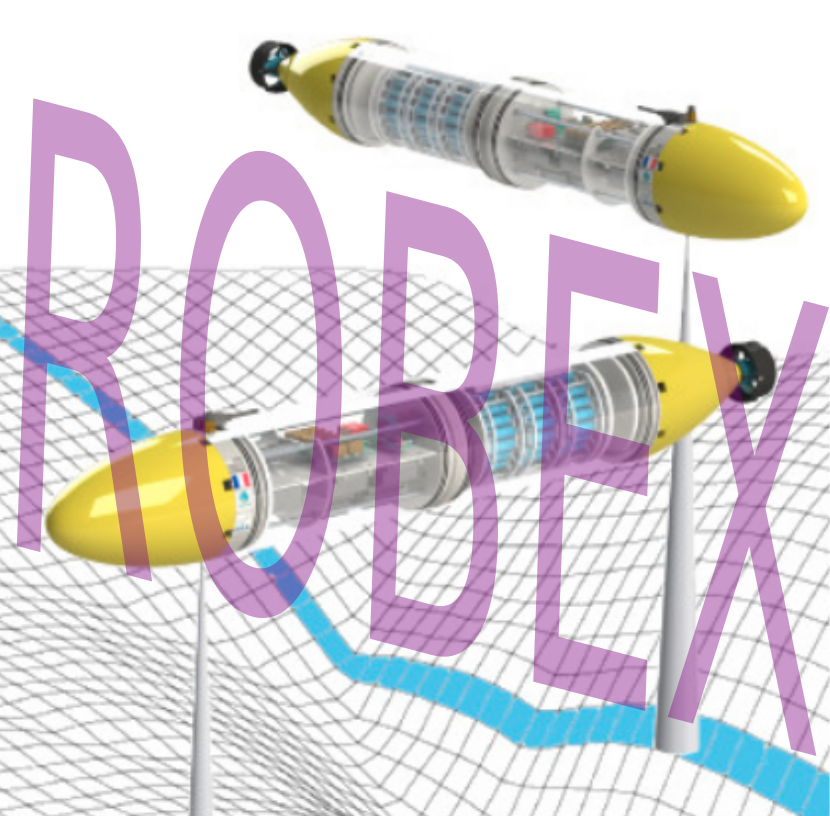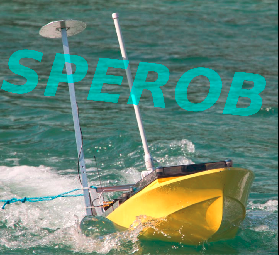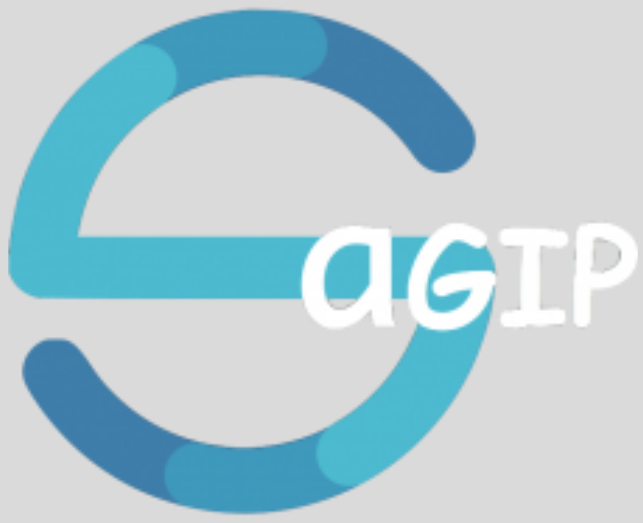Initiation à la recherche 2021
Luc Jaulin
Planning des soutenances
Le planning est donné dans la fiche qui suit
Il faut avoir rendu votre article au moins 24h avant la soutenance.
Sujets choisis
Estelle Arricau
Title: Reprojection de points 3D dans un environnement géoréférencé à partir d'images sonar frontal 2D.
Abstract: Le but est d'ensuite comparer le nuage de points 3D obtenu avec les données d'une carte bathymétrique pour faire de
l'identification de patterns dans l'envrironnement (matching de points 3D).
Reference papers: 'AUV-Based Underwater 3-D Point Cloud Generation Using Acoustic Lens-Based Multibeam Sonar' by Hyeonwoo Cho et. al.
and 'Underwater-Sonar-Image-Based 3D Point Cloud Reconstruction for High Data Utilization and Object Classification Using a Neural Network'
Antonin Bétaille
Title: Planification sociale de trajectoires en environnements humains dynamiques
Abstract: Le sujet est la planification de chemins socialement adaptatifs dans des environnements dynamiques.
Le but est de générer des trajectoires similaires à celles dont un humain serait capable. L'infrastructure logicielle proposée est constituée de trois modules :
un module d'extraction de caractéristiques (dynamique et forme des obstacles), un module d'apprentissage par renforcement inverse
(détermination de la politique de mouvement adaptée aux normes sociales), et un module de planification de chemin
(plus court chemin vers un objectif dans un environnement global).
Reference paper: https://link.springer.com/content/pdf/10.1007/s12369-015-0310-2.pdf
Enzo Loid Essono
Title: Utilisation du langage Julia pour résoudre des problèmes ensemblistes en robotique
Abstract: Cet article vise à présenter le langage Julia et de montrer comment nous pouvons l'utiliser afin de résoudre des problèmes ensemblistes en robotique.
Pour se faire, on va l'appliquer au cas du SLAM où nous devrons nous localiser en ayant pour seule information la position estimée de quelques marqueurs.
Reference paper: https://youtu.be/jj8Iy7FFMeM et https://youtu.be/iXJwq8-kcvE
Florian Gaurier
Title: Automatic GrabCut algorithm for real time application in robotics
Abstract: Image segmentation is the fact to isolate and extract significant regions in an image.
These objects can be simple (Ball) or complex (Human with clothes and different skin color).
Clustering algorithms are one of the main techniques of the field. Automatic GrabCut is one of them.
The objective of this paper is to implement this algorithm
using ROS (Robot Operating System) to simulate the real time context and then evaluate the time and
efficient detection performance on a dataset used in robotics applications.
Reference paper:
Martin Gounabou
Title: Utilisation de réseaux adversariaux génératifs (GAN) pour casser et protéger les captchas de texte
Abstract: En utilisant un synthétiseur de captchas et un raffineur entraîné avec GAN ( Generative Adversarial Network),
il est possible de générer des paires d'entraînement synthétisées pour classer les captchas.
L'objectif est donc à travers l'apprentissage simulé non supervisé, de réussir à casser, puis à protéger des captchas de texte.
Reference paper: https://arxiv.org/pdf/2008.11603.pdf, https://www.researchgate.net/publication/322843462_CAPTCHA_Image_Generation_Systems_Using_Generative_Adversarial_Networks.
Yohann Gourret
Title: Identification de câble par stéréovision
Abstract: Le but est de pouvoir déterminer la trajectoire d'un câble à partir de deux caméras de position connu par stéréovision.
De plus, à partir de cette trajectoire, déterminer s'il a ou non un noeud.
Reference paper: https://doi.org/10.1080/15599610802438680
Bernardo Hummes
Title: Formalization of mobile robot tasks
Abstract: The general context of this work is the logical and categorical formalization of mobile robots tasks.
The aim of this formalization is to be able to prove correct algorithms that perform some tasks between robots (such as robot gathering)
under various hypotheses (e.g. perfect or imperfect localization, bounded or unbounded visibility, synchronous or asynchronous decisions etc.),
or to prove the impossibility that such tasks can be performed under these types of hypotheses. An initial approach is made by introducing
the necessary elements from category theory needed for constructing the algebra that will represent such formalization.
Reference papers:
- M. Barr and C. Wells, Category Theory for Computing Science. Available: https://dl.acm.org/doi/10.5555/92134
- P. Flocchini, G. Prencipe, and N. Santoro, Eds., Distributed Computing by Mobile Entities: Current Research in Moving and Computing, vol. 11340. Cham: Springer International Publishing, 2019.
- J. van Benthem, Modal logic for open minds. Stanford, California: Center for the Study of Language and Information, 2010.
Thibault Jadoul
Title: Pré-apprentissage supervisé pour les réseaux profonds
Abstract:L'analyse porte sur des techniques de pré-apprentissage supervisé c’est-à-dire exploitant simultanément
les entrées et les sorties pour apprendre les auto-associateur. De ce fait, nous déterminons une initialisation
plus adaptée que la simple initialisation aléatoire des couches d’entrée ainsi que des couches de sortie.
Reference paper: https://projet.liris.cnrs.fr/imagine/pub/proceedings/RFIA-2010/pdf/7B_P58-Tian.pdf
Katell Lagattu
Title: Recomposition d'images sonars en mosaïque grâce à une méthode de Fourier
Abstract: L'objectif est ici de constituer une mosaïque d'images prises par un sonar à bord d'un véhicule sous-marin.
Chaque prise de vue du robot a une orientation et une position différente, et il s'agit de les assembler.
On ne peut pas appliquer les méthodes classiques de traitement d'images, par exemple la méthode des points d'intérêt,
à cause du bruit dans les données. On utilise donc des méthodes alternatives comme la transformée de Fourier.
Une méthode basée sur les fréquences est pertinente pour surmonter la difficulté liée au bruit.
Nous verrons les détails de cette méthode ainsi que ses enjeux.
Reference paper: HURTOS, Natalia, RIBAS, David, CUFI, Xavier, et al. Fourier‐based registration for robust forward‐looking sonar mosaicing in
low‐visibility underwater environments. Journal of Field Robotics, 2015, vol. 32, no 1, p. 123-151.
Maxime Legeay
Title: Interférences au sein d'un essaim de drones et comment réduire leur effet
Abstract: On étudie l'impact de la division de l'environnement et de la programmation modulaire sur les interférences observées
lors de missions avec un nombre de robots variable.
L'expérience semble pouvoir être reproduite sur simulateur, ce qui me permettra de tester les méthodes évoquées
dans ce papier et éventuellement y ajouter une touche personnelle.
Reference paper: https://www.researchgate.net/publication/230660807
Interference Reduction Through Task Partitioning in a Robotic Swarm.
Mauro Birattari and Marco Dorigo
Badr Moutalib
Title: Decentralized Multirobot SLAM
Abstract: Certain scenarios require fast and precise mapping of the environment like search and rescue, emergency operations and other situations that require fast
and reliable action. Multirobot SLAM can be a solid approach to solve this problem, but current approaches rely on one master robot doing all the processing and
map generation and then redistribute the result to the rest of the swarm. Decentralizing this process can open a vast of possibilities of optimization
and rapidity in the generation of maps by a multirobot system.
Reference paper: Reference paper : https://ieeexplore.ieee.org/document/8461155, https://ieeexplore.ieee.org/document/6631323
Stéphane Ngnepiepaye
Title: Toward Autonomous UAV Localization via Aerial Image Registration
Abstract: Absolute localization of a flying UAV on its own in a global-navigation-satellite-system (GNSS)-denied environment
is always a challenge. In this paper, we present a landmark-based approach where a UAV is automatically locked into the
landmark scene shown in a georeferenced image via a feedback control loop, which is driven by the output of an aerial image registration.
To pursue a real-time application, we design and implement a speeded-up-robust-features (SURF)-
based image registration algorithm that focuses efficiency and robustness under a 2D geometric transformation.
A linear UAV controller with signals of four degrees of freedom is derived from the estimated transformation matrix.
The approach is validated in a virtual simulation environment, with experimental results demonstrating the effectiveness
and robustness of the proposed UAV self-localization system.
Reference paper: https://www.researchgate.net/publication/349245882_Toward_Autonomous_UAV_Localization_via_Aerial_Image_Registration
Yves Njamen
Title: Auto-calibrage d'une caméra
Abstract: La caméra monoculaire (ou stéréo) est un capteur extéroceptif souvent utilisée en robotique.
En effet, elle permet de percevoir le monde pour différentes applications : SLAM, odométrie visuelle, cartographie, ...
Pour ces applications, il est nécessaire de déterminer les paramètres intrinsèques de la caméra par calibration.
Par ailleurs, la calibration est généralement réalisée grâce à une mire, ce dont on ne dispose pas toujours.
Dans ce sujet, il s'agit de tester et comparer les méthodes robustes d'auto-calibrage de caméra qui existent.
Reference papers: A Survey of Camera Self-Calibration, de Elsayed E. Hemayed
Camera Self-Calibration : Theory and Experiments " de O.D. Faugeras, Q.-T. Luong et S.J. Maybank
Baptiste Orlhac
Title: Détection intelligente des mains pour la reconstitution et l'utilisation comme contrôleur en VR
Abstract: Megatrack est un système de vision couplé à une intelligence artificielle entraînée à détecter des marqueurs sur des mains via des caméras,
et reproduire ainsi les mouvements et la position de la main en 3D dans une simulation en VR.
L'objectif est de tenter de reproduire le comportement adopté par cette solution, puis de coupler ceci aux solutions présentées dans l'article
afin de tracker, en plus d'une position précise de la main, des gestuelles, et associer ces gestuelles à des actions.
L'idée est d'ainsi améliorer l'expérience utilisateur en réalité virtuelle en se débarrassant potentiellement des manettes,
encore majoritairement utilisées aujourd'hui. Il faudra également montrer les limites d'un tel couplage, et j'étudierai également leur couplage avec d'autres technologies de VR de l'état de l'art.
Reference paper: MEgATrack: Monochrome Egocentric Articulated Hand-Tracking for Virtual Reality
Hugo Piquard
Title: Implémentation de Gym-gazebo 2, un package de d'apprentissage par renforcement pour ROS2
Abstract: Le but de cet article est de mettre en place une architecture logiciel sur ROS2 permettant de tester et développer des modèles de robot
répondant à des commandes générées par Reinforcement Learning. Cette architecture est composée de trois éléments, ROS2 pour l'état du véhicule,
Gazebo pour la simulation (physique et visuelle) et un environnement Gym pour le Renforcement Learning.
Cette architecture permet donc d'entrainer des robots réels fonctionnant sur ROS2 en simulation puis d'utiliser cet entrainement dans un environnement réel.
Reference paper: https://arxiv.org/abs/1903.06278
Samuel Prouten
Title: Suivi de trajectoire d'un robot à géométrie directionnelle double Ackermann
Abstract: La géométrie directionnelle double Ackermann est une extension de la géométrie directionnelle Ackermann simple.
Cet arrangement permet d'assurer que l'axe de toutes les roues pointent vers le même point qui est le centre de rotation instantané du véhicule.
La modélisation géométrique d'un tel véhicule est bien documentée mais la dynamique est un sujet moins traité dans la littérature scientifique.
Le but de cet article est de modéliser la dynamique d'un véhicule à géométrie directionnelle double Ackermann et de développer un contrôleur permettant de suivre une trajectoire.
Reference paper: Kinematics of four-wheel-steering vehicles ; K. N. Spentzas, I. Alkhazali, M. Demic
Hugo Sabatier
Title: Apprentissage par renforcement par 2 agents sans connaissances initiales dans le cas des situations à informations parfaites
Abstract: Abstract: In this paper we will compare 3 self-play methods in Reinforcement Learning: Genetic Algorithm (GA), Proximal Policy Optimization (PPO),
and Cooperation via Covariance Matrix Adaptation Evolution Strategy (CMA-ES). We show that self-play can produce agents that can defeat
the baseline policy without the need to train against it. Before going into self-play, we will first go through examples that use
standard Reinforcement Learning methods such as PPO and evolution strategies (CMA-ES) to train an agent in the standard single-agent environment,
where the agent learns by playing against the “expert” baseline policy.
Reference paper: COHEN-SOLAL, Quentin. Learning to Play Two-Player Perfect-Information Games without Knowledge. arXiv preprint arXiv:2008.01188, 2020
Isaac Andrei Witt
Title: Using winding numbers in 3D reproduction
Abstract: Following the discovery of the article by Jacobson A., Kavan L. and Sorkine-Hornung O. on the segmentation of a 3D representation
using winding numbers, we attempt in this article to implement a similar method in Python based on the contours of an image.
Reference paper: A. Jacobson, L. Kavan, O. Sorkine-Hornung. Robust Inside-Outside Segmentation Using Generalized Winding Numbers
Sujets proposés
Utilisation du langage Julia pour résoudre des problèmes ensemblistes en robotique
Il faudra reprendre les travaux de David Sanders et traiter d'un problème de localisation.
https://youtu.be/jj8Iy7FFMeM
Etude de l'équilibre des câbles sous marins
Voir avec C. Viel.
State estimation with fleeting data
Voir avec F. Le Bars.
Geometric filtering and navigation application
Voir la vidéo: https://youtu.be/VDoEJeGBThM
Statistical filtering is a desirable mathematical framework for the estimation of the internal state variables of a
dynamical system in the light of various sensors' measurements. Since the advent of the space age, it has played a
pivotal role in guidance and navigation problems in aeronautics and robotics.
Its workhorse, the Kalman filter – albeit usable in a nonlinear context by linearizing
about the estimated state trajectory – deeply builds upon the specificity of linear systems.
As a result, key theoretical properties are lost in nonlinear contexts, in particular
when dealing with challenging nonlinear problems related to the navigation of autonomous systems.
However, it turns out that many such estimation problems bear a structure akin to linear systems,
after a proper embedding of the state space into a matrix group has been found. Essentially,
by replacing vector addition with matrix multiplication, linear observer design (or linear filter design)
carries over, as well as a number of convergence and consistency guarantees discovered
over the past fifteen years. We illustrate this perspective by addressing various problems,
from the design of high performance industrial inertial navigation systems to robot simultaneous localization and mapping.
For the latter, the geometric approach resolves problems connected to the notion of observability
that have long impeded the use of the classical extended Kalman filter.
Reconstruction de la position d'un câble à partir de deux projections
Winding number
Given one periodic trajectory x(t) of period 1, find the number of times 0 is surrounded.
Ariadne: A tool for rigorous numerics and verification of nonlinear and hybrid systems
http://www.ariadne-cps.org/
Calibrating an eCompass in the Presence of Hard-Soft-Iron Interference
Articles de démarrage:


Vous devez expliquer comment calibrer un boussole magnétique et faire le programme Python qui convient.
Une validation devra se faire sur des données réelles.
Proposer une méthode par intervalles pour qualifier l'erreur sur la position du nord obtenue après calibration.
En déduire une méthode d'autocalibration.
Exploration using magnetism only
We create first a magnetic 2D world. In this world, we should try to find an exploration method
to build a map of this environment without getting lost.
The method will be based on cycles.
Localization using interval and fuzzy sets
Comparaison de techniques de SLAM
Le sujet étudie différentes méthodes de SLAM. Il s’agit dans un premier temps
d’implémenter une méthode de SLAM utilisant le calcul par intervalles et une autre
basée sur le filtre de Kalman afin de pouvoir comparer les performances de ces deux
approches. Par la suite il sera éventuellement possible de s’orienter vers une
amélioration d’une des méthodes ou de s’intéresser à une approche SLAM TDOA (Time
difference of arrival).
Articles produits
All papers that have been written this year are given here :


